Table of Contents
Overview – Carbohydrates
Carbohydrates are one of the four essential macromolecules of life, composed of carbon, hydrogen, and oxygen in a 1:2:1 ratio. They function as the body’s most immediate source of energy and are critical to metabolism, storage, and cellular communication. Understanding their structure—from simple monosaccharides to complex polysaccharides—is key for final-year medical students learning biochemistry, digestion, and metabolic disease.

Definition
Carbohydrates are biological compounds made of carbon, hydrogen, and oxygen, typically in a 1:2:1 atomic ratio. They serve as key energy sources, structural components, and metabolic intermediates.
Classification of Carbohydrates
Carbohydrates are grouped based on the number of sugar units:
Monosaccharides (Simple Sugars)
- Definition: Single sugar units that cannot be broken down further.
- Examples:
- Glucose
- Fructose
- Galactose
- Properties:
- Exist as ring structures in aqueous solution
- Share the same chemical formula but differ structurally (i.e. are isomers)
- Are the primary fuel for cellular metabolism
- Metabolic Pathways:
- Glucose → Glycolysis → ATP
- Fructose → Fructolysis → Glycolysis → ATP
- Galactose → Leloir Pathway → Glycolysis → ATP
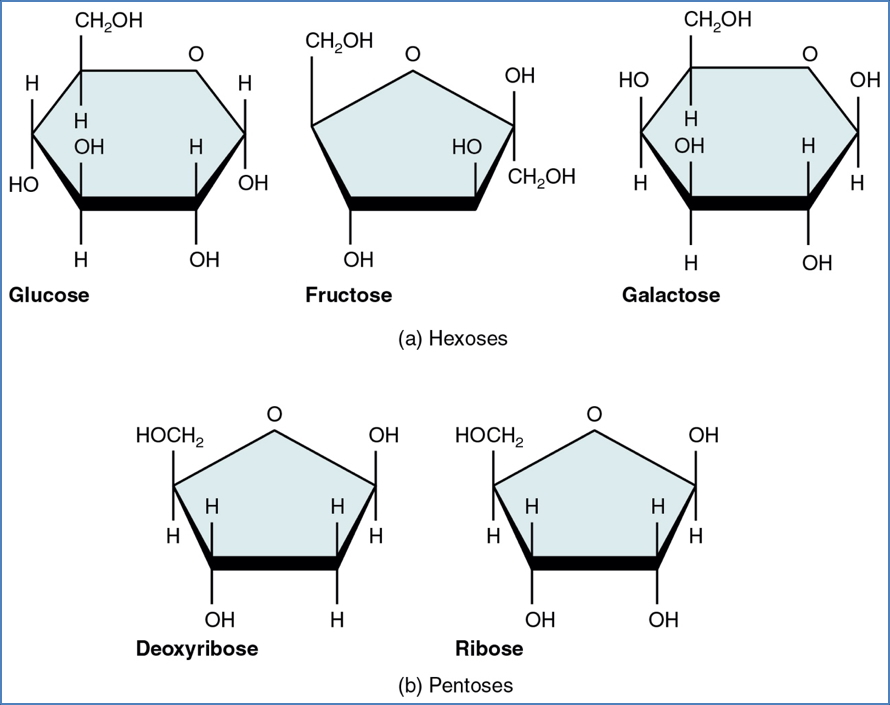
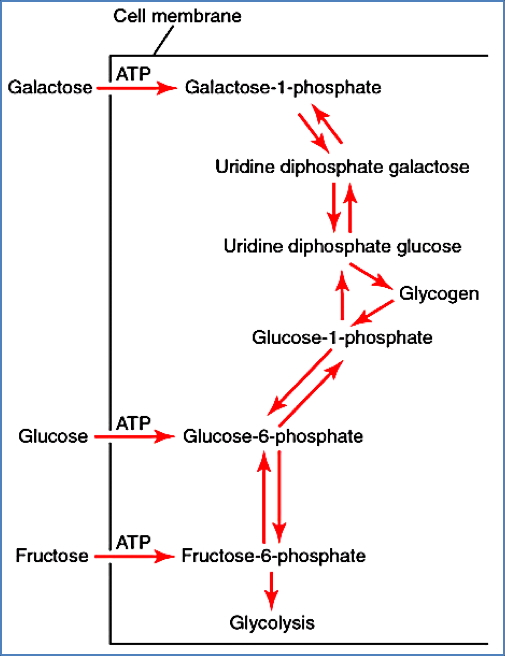
Disaccharides
- Definition: Double-sugar units formed by two monosaccharides
- Examples:
- Maltose = Glucose + Glucose
- Lactose = Glucose + Galactose
- Sucrose = Glucose + Fructose
- Digestion:
- Must be broken down into monosaccharides via hydrolysis
- Key enzymes:
- Maltase → breaks maltose
- Lactase → breaks lactose
- Sucrase → breaks sucrose
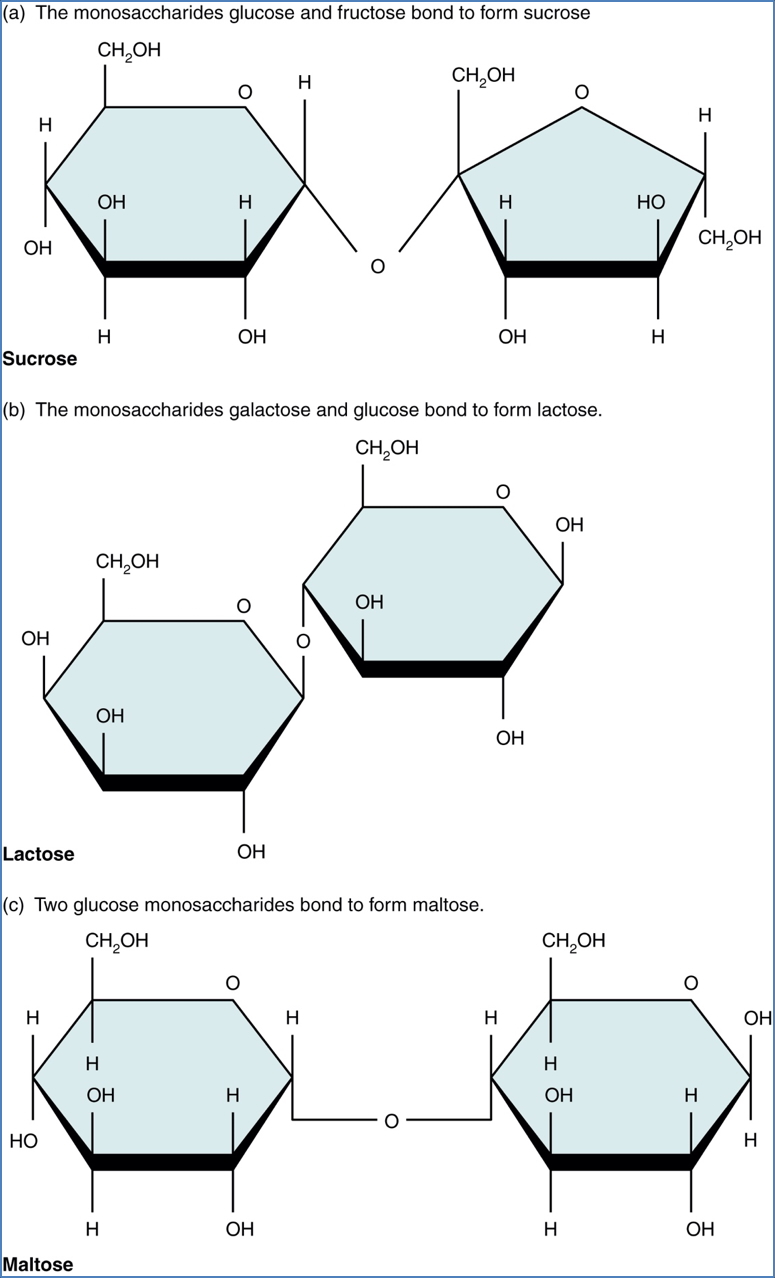

Polysaccharides (Complex Carbohydrates)
- Definition: Long chains (polymers) of monosaccharides
- Examples:
- Starch:
- Energy storage in plants
- Made of glucose units
- Glycogen:
- Storage form in animals
- Highly branched glucose polymer
- Cellulose:
- Structural component in plant cell walls
- Not digestible by humans (dietary fibre)
- Digestible by herbivores with gut microflora
- Starch:
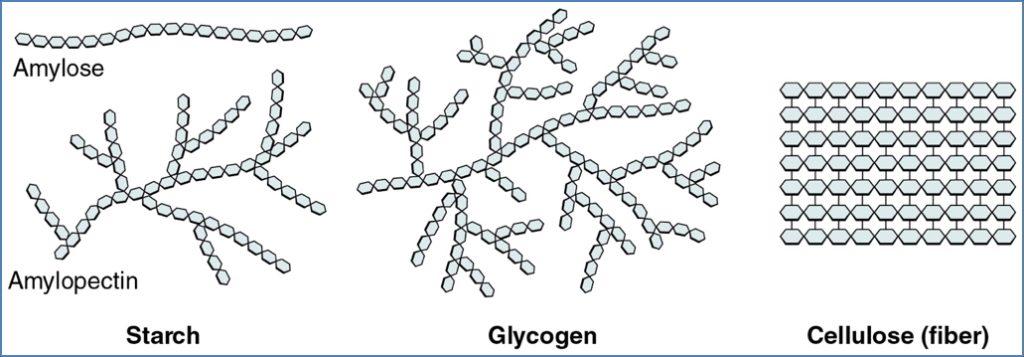
Synthesis and Breakdown
Carbohydrates, like other macromolecules, are polymers formed by linking monomers through dehydration synthesis and broken down by hydrolysis.
Dehydration Synthesis
- Joins two monomers by removing a water molecule (loss of OH from one and H from another)
- Forms a covalent bond
Hydrolysis
- Breaks a polymer into monomers by adding water
- OH is added to one monomer, H to the other
- This process is catalyzed by enzymes during digestion
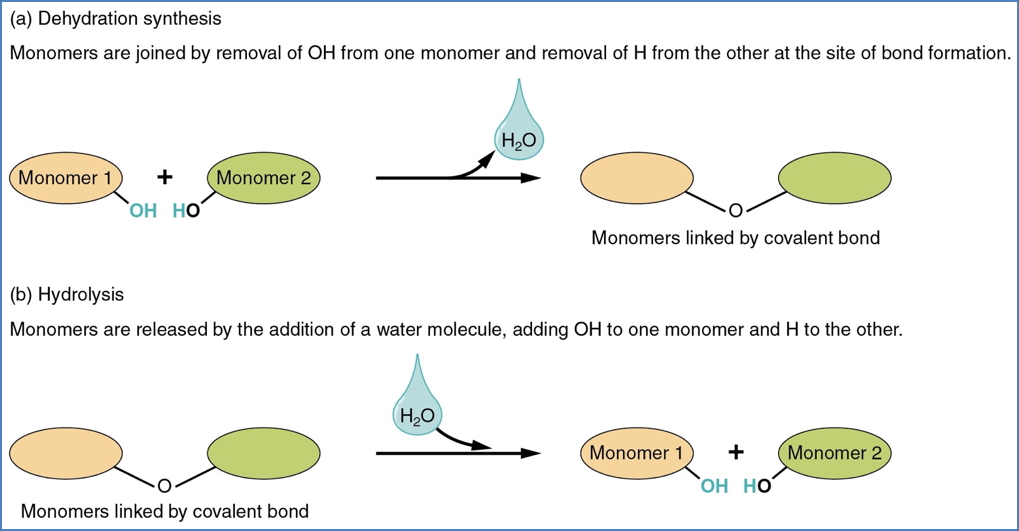
Glycogen Metabolism
- Glycogenesis:
- Occurs after meals
- Converts excess glucose into glycogen for storage
- Glycogenolysis:
- Occurs during fasting or energy demand
- Breaks down stored glycogen to release glucose

Summary – Carbohydrates
Carbohydrates are energy-rich biological molecules crucial for metabolism, storage, and cellular function. From monosaccharides like glucose to complex polysaccharides like glycogen and cellulose, they serve as both fuel and structural components. Enzymes enable their digestion and utilization in human metabolism. For a broader context, see our Cell Biology & Biochemistry Overview page.